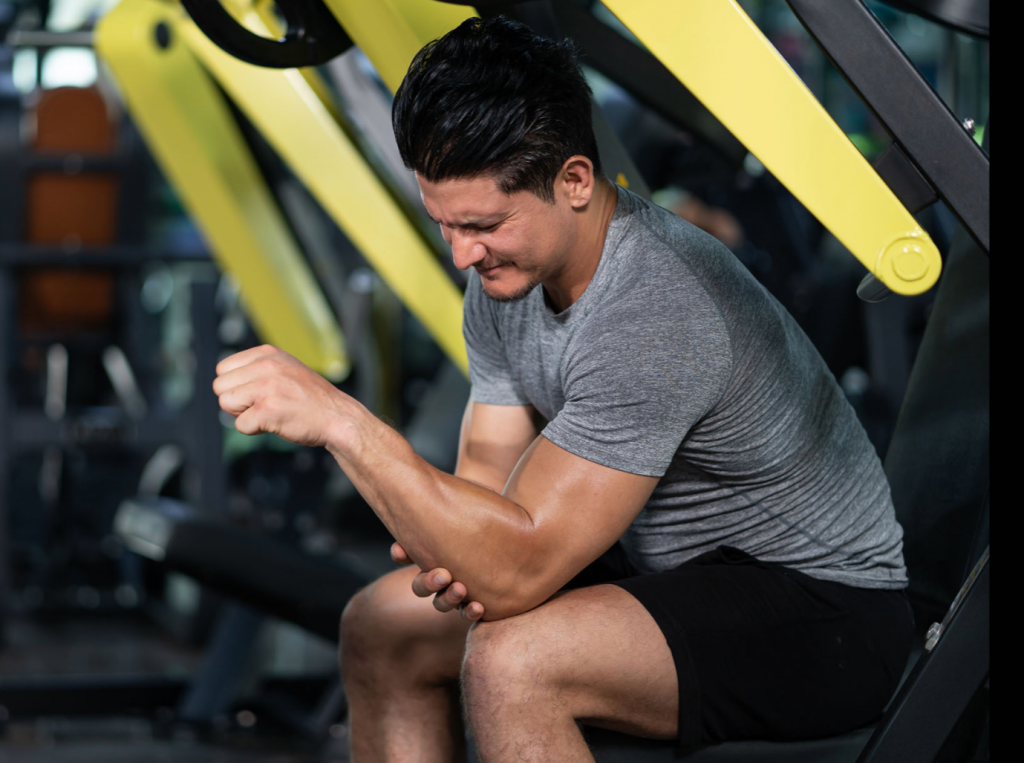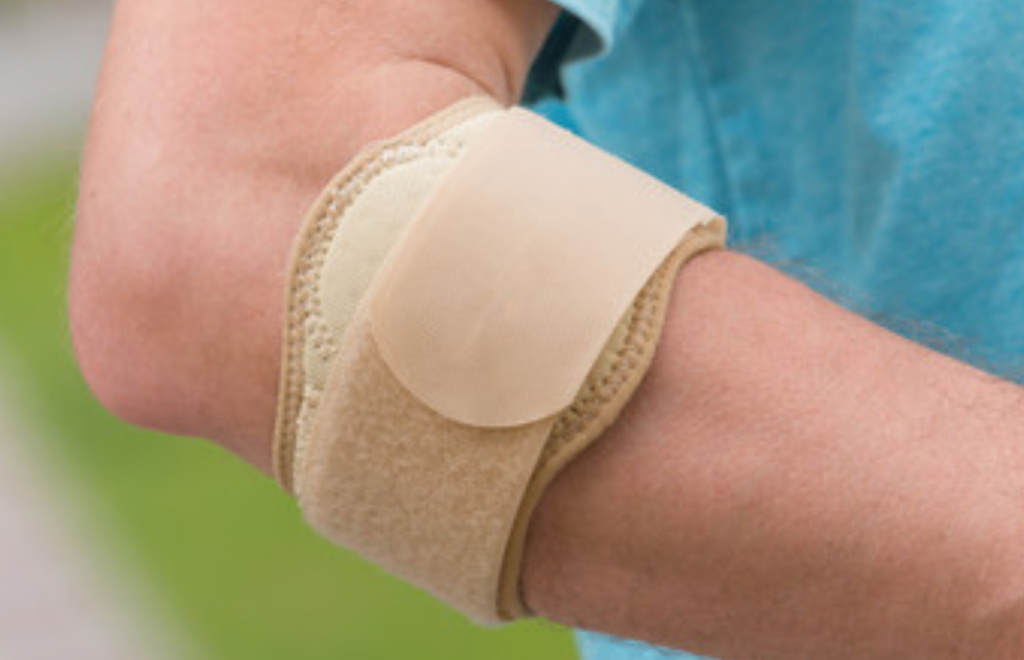Last Updated on November 20, 2025 by Drew Pierce
When I first started to play pickleball, it was to avoid the strain that tennis put on my lower back. However, I quickly learned that pickleball is not necessarily better for my damaged sacroiliac joints despite being easier on my muscles. But that hasn’t stopped me from playing!
I can’t help but notice each time I step onto the court, more and more players wear braces on their elbows and knees–and I’m talking about players of all ages! The most common pickleball-related injury is good ol’ Lateral Epicondylalgia, aka tennis elbow.

What is pickleball elbow?
Tennis elbow is an inflammation of the tendons that attach your forearm muscles to the outer part of your elbow. It’s a common condition for tennis players, and it can occur in pickleball players too.
How does tennis elbow differ from pickleball elbow?
Tennis elbow and pickleball elbow share similar symptoms because, as of this writing, they are one and the same. However, I’m sure marketing teams are working hard to create a new line of products and physical therapy regimens for pickleball elbow. Where there’s injury, there’s money! For this article, we will use pickleball elbow and tennis elbow interchangeably.
What are the symptoms of tennis elbow?
The symptoms of tennis elbow include pain in the localized area around the outside of the elbow, pain when you grip something or twist your wrist, weak grip strength, and soreness or tenderness on the outside of your elbow when you touch it.
How can you prevent pickleball elbow?
Fortunately, tennis elbow can be prevented with proper warm-up exercises and stretching before playing pickleball. It would help if you also looked into getting a good pickleball paddle explicitly designed for tennis elbow–these paddles are designed with ergonomic handles that provide extra support and cushion to reduce strain. Also, be sure not to grip your paddle too tightly.

What are some tennis elbow exercises?
The two main tennis elbow exercises you can do are isotonic (flexing and extending your arm) and isometric (pushing against something). Doing three sets of 10 reps of these exercises daily could help keep your muscles strong and help reduce the risk of tennis elbow.
What equipment can help tennis and pickleball elbow?
There are a variety of tennis and pickleball paddles designed for tennis or pickleball elbow that provide extra shock absorption to reduce strain on your arms. Paddles made from graphite or other lightweight materials can be particularly helpful as they offer more flexibility but still give you maximum power when hitting shots. Additionally, some paddles have adjustable handles that can reduce the strain on your wrist and elbows.
What paddle should you use to prevent pickleball elbow?
To help prevent pickleball elbow, the ideal paddle is one with a lighter weight and thicker handle. This will reduce vibration on your arm and make playing more comfortable for you. Keep in mind that pickleball paddles need to be replaced now and then!
Three pickleball paddles for tennis elbow to consider:
ProKennex Pro Flight: Shock-absorbent technology, including a carbon casing and “Cloud Cell” poly core will limit the number of vibrations running through your arm.
Selkirk Amped S2: Measuring 15.75 inches long and 8 inches wide, this paddle grants players superior stability plus a large contact surface, thus saving wear and tear on your elbow without sacrificing power.
Joola Vision CGS: An aerodynamic head helps reduce the effort needed ti swing through the air, and less resistance, means less muscle strain. The elongated handle is also helpful, especially for players with a two-handed backhand.
Should I wear a tennis elbow brace?
If tennis elbow is beginning to affect your pickleball play, consider wearing a tennis elbow brace. It can support the muscles and tendons in the area and help reduce pain when playing. Make sure that you buy one that fits properly and doesn’t get in the way of your shots.

Playing pickleball is a great way to stay active, but it’s important to take care of yourself! Taking preventative measures for tennis and pickleball elbow will help keep you in the game for longer. With the right equipment and knowledge, there’s no reason why tennis or pickleball elbow should stop you from playing your favorite sport!

